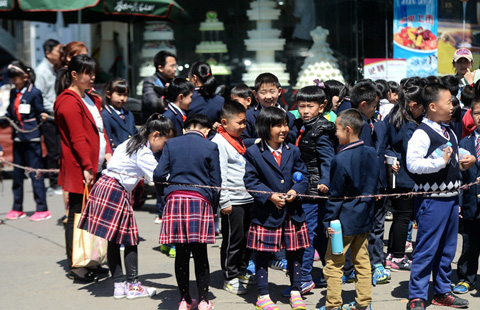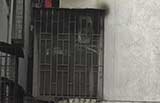When Chinese music encounters the West
By Dong Lin (chinadaily.com.cn) Updated: 2012-10-24 15:52After graduating from the Conservatory in 1993, Sun joined the Shanghai Symphony Orchestra and held the position of Concertmaster in 1996.
In the same year, Sun visited specialists in classical music during his tour of Australia. He believes this experience offered him a window into the orchestral world.
Despite being a concertmaster back home, Sun felt his knowledge was far from complete.
At the end of 1997, he moved to Australia to complete a Master's in Music at the Australian Institute of Music.
In 2002, Sun joined the Australian Opera and Ballet Orchestra as its Associate Concertmaster and was later recruited by the Sydney Symphony Orchestra, holding the same position, in 2007.
China's orchestral strength admittedly still ranks below its western counterparts. "The China National Symphony Orchestra takes a month to rehearse a new production, while the Sydney Symphony Orchestra practices only twice within a week before a new show is premiered," said Benjamin Li.
Starting in 2012, Sun Yi, Benjamin Li and other musicians from the Sydney Symphony Orchestra will be invited to teach Chinese students in Guangzhou under a governmental cultural agreement between China and Australia.
But what about China's own traditions?
During the past decades, the development of Chinese national music has followed two different paths.
On the one hand, demand for training has skyrocketed in the past ten years; on the other, in the domestic market a growing chasm has emerged between audiences and composers.
There are at least one million students of the guzheng, a Chinese plucked zither, but this is a small number in comparison to those playing western instruments. This may change in the future.
As incomes improve, more urban people can afford to buy traditional Chinese instruments, which are generally less-expensive than western ones.
There is a thirst for traditional culture, a natural result of higher living standards and a government devoted to reviving Chinese traditions.
Hou Weiping, 26, who works for the China Daily website, is learning to play the guqin, listed by UNESCO as an intangible cultural heritage item.
"Initially I wanted to buy a guitar to practice as a pastime," Hou said.
But an accidental visit to a training school for guqin convinced her to change her mind.
Situated within an office building in downtown Beijing, the practice room is decked out with artificial hills, murmuring flowing water, a pond stocked with fish, and the fragrance of burning incense.
"I couldn't imagine there could be such a traditional place in such a bustling city as Beijing," she said.
When the guqin was strummed, Hou felt an inner peace, forgetting all her troubles.
Despite resurgence in students learning traditional Chinese instruments, the instrumental music market in China is dominated by western compositions.
"The domestic tendency to write Chinese music using western composition skills has directly brought about the market depression in recent years," said Xi Qiang, President of the China National Orchestra. "It looks like a man wearing a suit with a traditional Chinese cap."
Learning doesn't have to equate to duplication. Fusing with western elements, modern Chinese works are meant to be produced with their own music language. It is essential to remember the direction of modern Chinese arts and the demands of its audiences, Xi observed.
According to Xi, China's Ministry of Culture is planning to establish an exclusive fund, in an effort to foster cultural exchanges between the nine artistic houses affiliated with it—the China National Orchestra is among them—and overseas countries.
Chinese instrumental music may not be as popular as western music, even on home turf, but it is definitely a part of the musical tapestry of the world.
A Chinese scientist from the Ming Dynasty (1368-1644) devised a twelve-tone temperament, which was later broadly adopted in western music; the Chinese guqin piece Liu Shui, otherwise known as Flowing Water was taken together with pieces from other cultures by NASA into space in 1977, representing the artistic achievements of human beings; daluo, a Chinese gong, is widely used in western orchestras. There are many such examples of Chinese music playing some role beyond the Middle Kingdom.
And there will be many more.
- Chinese scientists modify gene to make humans immune to HIV
- Premier underlines peaceful settlement of boundary issues with India
- Hospitals add beds for maternity boom
- Chinese Academy of Sciences tops global science institutions
- China plans to launch core module of space station
- Xi urges stronger PLA
- Charities rebuild image through relief efforts
- Self-testing to boost HIV battle
- Study finds plummeting levels of physical activity among Chinese adults
- School not at fault, its principal insists








